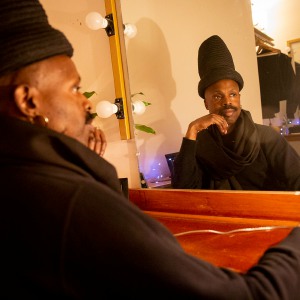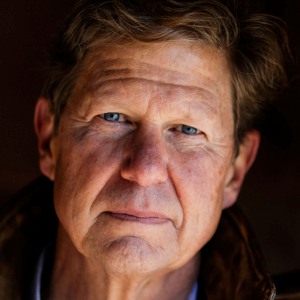Column: Why Belleau Wood matters
| Published: 09-12-2020 10:10 PM |
On Nov. 11, 2018, President Donald Trump was scheduled to observe the centenary of World War I’s armistice in the Aisne-Marne American Cemetery and Memorial, where the dead of the Battle of Belleau Wood are buried. At the time, I and a dozen other descendants of men who had fought at Belleau Wood were also in France. We were touring Belleau Wood and other battlefields where our ancestors had fought with the American Expeditionary Forces’ 2nd Infantry Division in World War I.
Over five days we braved mud, downpours and woodland underbrush to follow our grandfathers’ and great-uncles’ footsteps in combat and to honor their companions’ graves.
So we were stunned when we heard that Trump had cancelled his visit to the Belleau Wood cemetery because of “bad weather.” There was only a light mist and drizzle. We stood under it for several hours while observing the armistice at another monument.
The combat veterans in our group snorted. They had seen combat-trained pilots like the one flying Trump’s helicopter land in much worse — and under enemy fire — in Vietnam and Iraq.
Perplexed, we shook our heads in disbelief and filed the episode among other curiosities of the Trump presidency.
But now the story is back and now we are more perplexed — less about Trump than about the silence of top Marines who served in the Trump administration: John Kelly, James Mattis and Joseph E. Dunford. To understand our perplexity, a bit of history can illuminate why a battle that was tiny by World War I standards was consequential for the Marines, for the U.S., and for me.
Numerous authors have written about Belleau Wood. Kevin Seldon has dedicated his life to a minute-by-minute account of the battle (now at volume two): Among the Ranks of the Carrion Men: The Epic Story of the Thirty-Six-Day Fight in and Around Belleau Wood. Until his death in 2016, George Clark, of Pike, N.H., was the world authority on the World War I Marines and his account is definitive: Devil Dogs: Fighting Marines of World War I. Laurence Stallings’ The Doughboys is a lively and authoritative account of the AEF in World War I.
The wood is a patch of forest the size of Central Park an hour and a half from Paris. The battle for it lasted “only” 36 days; the Battle for Verdun stretched over nine months. There were “only” 9,777 dead and wounded; 57,000 died on the first day of the Battle of the Somme.
Article continues after...
Yesterday's Most Read Articles
 Hartland voters successfully petition for school budget revote
Hartland voters successfully petition for school budget revote
 JAG Productions announces closure, citing ‘crisis facing the arts’
JAG Productions announces closure, citing ‘crisis facing the arts’
 Hanover’s Perreard may soon capture the attention of collegiate coaches in two athletic pursuits
Hanover’s Perreard may soon capture the attention of collegiate coaches in two athletic pursuits
The U.S. entered the war in April 1917. By January 1918, Germany knew it had little time to knock France and Britain out before America really geared up for the fight. In March 1918 Germany “rolled the dice” and launched a series of offensives that punched through French and British lines. By May, German troops were at Chateau-Thierry, barely 45 miles from Paris.
In May 1918, the 2nd Division, a unique hybrid of both Marine and regular U.S. Army units, was feeling cocky. They were retraining after their baptism of fire in a few trench raids — Boy Scout stuff — during a month of service near Verdun. On May 31 they were engaged in Memorial Day ball games and religious services when a panicked French messenger burst in. The Germans had reached Chateau-Thierry! The French were in retreat!
The 2nd Division scrambled. After an overnight ride on springless trucks over refugee-packed roads, the 2nd Division stopped outside Chateau-Thierry near the town of Belleau.
The Marines dug in, threw up a line of machine guns and waited for the Germans. On June 2, they arrived. On June 3 the fight began in earnest.
My great-uncle, Capt. Lothar R. Long, a machine-gun officer in the Marines wrote: “They came over the top of the ridge and down into the valley and town in a regular stream, — a long, thick line of slow moving gray, right through bursting 75 shell, and into a belt of machine gun fire — about 72200000000000000 of ’em, I should say. ... The marines never budged an inch.”
Repulsed, the Germans fell back and holed up in Belleau Wood. Their leader, who was a veteran of bush wars in Africa, used the wood’s rocky outcroppings and ravines to create mini-fortresses and machine-gun nests.
On June 6, the Marines struck back. Benjamin S. Berry, the ancestor of a family on our French tour, led Marines across the open, poppy-studded wheat field in front of the wood. With measured step and bayonets glistening in the June sun, they were mowed down by German machine gun fire. More Marines died on June 6 than in the corps’ entire history before that day.
After that, Marine and Army regiments spent the next month in a series of operations to root the Germans from the woods. We think of World War I battles as impersonal industrial slaughter. But Belleau Wood was up close and personal — hand-to-hand combat — as dozens of survivors’ diaries, letters and oral histories revealed. One veteran compared it to deadly hide-and-seek. Others described companions taking out machine-gun nests by creeping up and pushing the guns’ muzzles away with their bare hands. Attempts to clear the wood with artillery only fouled the terrain with boughs and twisted trunks. Corpses rotted without burial for weeks.
In a Marine Corps oral history, future Gen. Gerald Thomas, the grandfather of another member of our French group, said he did not eat for five days. A culvert was a first-aid station, a wine cellar an operating room. Poison gas sank and lingered in ravines. Shell-shock turned men into laughing maniacs and made a civilian’s lost dog chase its tail.
French and British leaders learned troops could handle frontline trenches for only three or four days. Marines were only rotated out of “Hellwood” after two weeks. My own great-uncle was in Belleau Wood for 35 days.
American journalists were forbidden to name individual units, but a story naming the Marines by a Chicago newspaperman who was embedded with Benjamin Berry slipped by the censors. At battle’s end, American headlines screamed “Marines Win Hot Battle, Sweep Enemy From Height Near Thierry” and “Americans Dash Into Prussian Baby Butchers and Do Beautiful Work With Bayonets and Bombs.”
The French “went nutty” over the Marines, my great-uncle wrote. They re-named Belleau Wood for them and gave them the honor of wearing the fourragère — a braided cord on their epaulets.
The Germans were stunned. Captured Germans interrogated in an intelligence report my great-uncle saved said the 2nd Division shot anything that moved; they were animals.
British historians call Belleau Wood a mere “psychological victory.” But it renewed the French will to fight. The Germans knew it heralded the end. After Belleau Wood, they were on the back foot.
Belleau Wood became the founding myth of the modern Marine Corps, up there with Iwo Jima and Khe Sanh. It gave them stirring words: “C’mon, you sons of bitches, you want to live forever?” and “Retreat? Hell, we just got here!”
Belleau Wood was a dark initiation rite. The Marines went in as boys and came out men.
Likewise, the battle matured the Corps, transforming it from a small expeditionary force into an internationally recognized fighting machine. Marines still make pilgrimages to Belleau to drink from the fountain used to fill canteens in 1918. John Kelly and Joseph Dunford drank there in 2018. Marines of the 5th and 6th regiments, which fought at Belleau Wood, still wear the fourragére. Dunford has worn it twice.
The attention the Corps got in 1918 soured Army leaders, who kept the Marines off European soil in World War II. Prescient Belleau Wood veterans understood the importance of the Pacific in the 1930s and used their experience at Guadalcanal and Peleliu. Belleau Wood veterans commanded the Corps into the 1960s.
Belleau Wood’s influence goes beyond Marines. Belleau Wood set the bar for the entire American Expeditionary Forces in World War I. The AEF later earned President Woodrow Wilson the power to dictate the peace. They crowned the U.S. as a global leader. Saving Europe from the Germans created a pattern and sense of obligation alive today (and colored Americans’ view of the French military).
World War I Marines became models for American men. F. Scott Fitzgerald and Ernest Hemingway were openly jealous of the writers who were Belleau Wood veterans, John W. Thomason, Thomas Boyd and Laurence Stallings.
Forgotten now, Thomason’s book of poignant ink and written sketches, Fix Bayonets!, Boyd’s autobiographical novel Through the Wheat and Stallings’ Broadway and Hollywood hits What Price Glory? and The Big Parade were larger commercial successes than anything Fitzgerald or Hemingway had produced. Nevertheless, a visit to Belleau Wood was a key scene in Fitzgerald’s Tender is the Night and the protagonist of Hemingway’s story Soldier’s Home “had been at Belleau Wood.”
And for descendants of men who fought at Belleau Wood?
My tour group included third-generation Marines, inspired by their grandfathers’ service. In contrast, one friend’s father never shook the malign influence of a Belleau Wood veteran who railroaded him into the Marines and Vietnam.
My great-uncle stayed in the Marines, which ordered him back to France in 1919 to make a map of Belleau Wood. He had told his brother that the memory of Germans coming over the hill would torment him forever; he couldn’t face seeing Belleau Wood for at least 20 years. Back on the battlefield of 1918, my great-uncle shot and killed himself.
A hundred years later, Belleau Wood casts a shadow over our lives. It must certainly do the same for Kelly, Mattis and Dunford. How can they be silent? I hope it is because they feel as I do: that Trump’s alleged comments are so petty in comparison to the sacrifices of Belleau Wood they are hardly worth response.
Or, maybe, like me, Kelly, Mattis and Dunford are perversely grateful for a fracas that has brought attention to a stirring American moment.
Madeleine Johnson, of Enfield, is a freelance journalist who has studied the Marines in World War I for many years. In 2018, she delivered a paper at the Marine Corps History Division’s World War I Centennial Symposium titled The Art of War: Laurence Stallings, John W. Thomason, Thomas Boyd.

 Editorial: Chris Sununu’s moral vacuum
Editorial: Chris Sununu’s moral vacuum Editorial: Gambling tarnishes America’s sporting life
Editorial: Gambling tarnishes America’s sporting life By the Way: A white nationalist’s many mistruths
By the Way: A white nationalist’s many mistruths Column: The age-old question of what to read
Column: The age-old question of what to read
